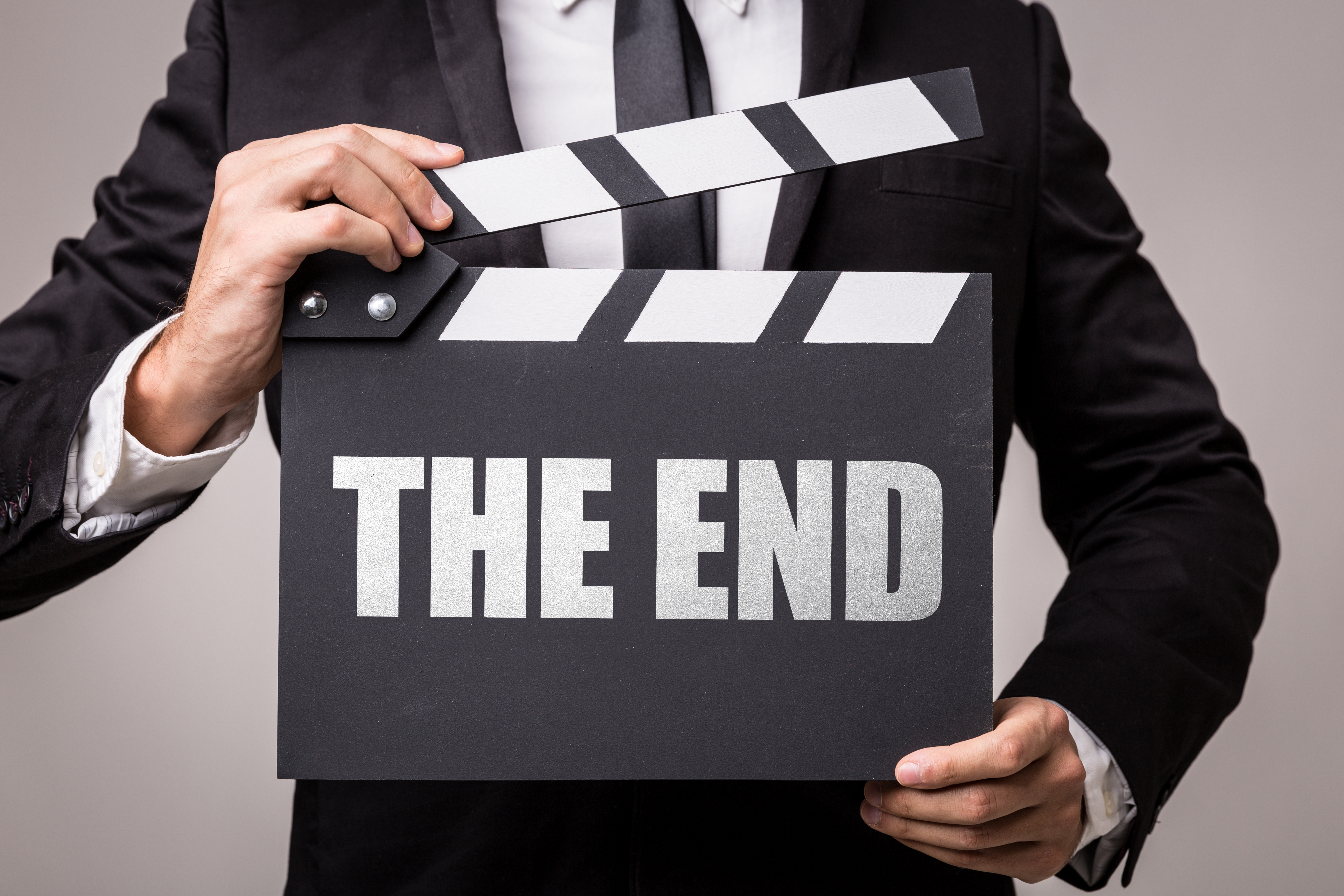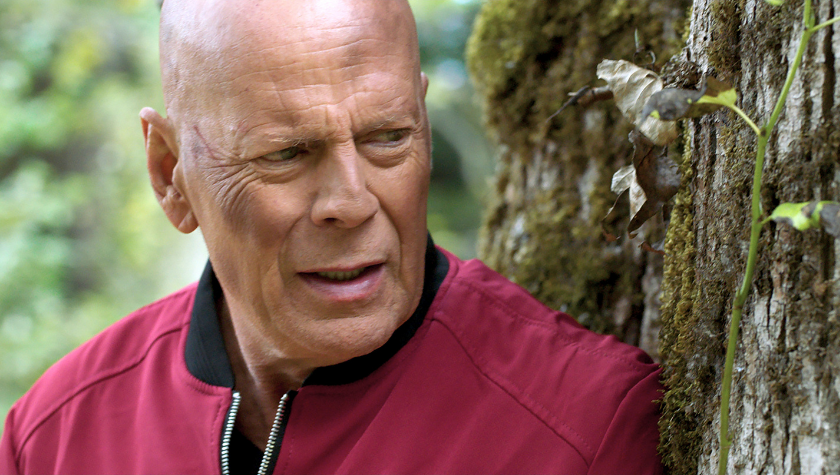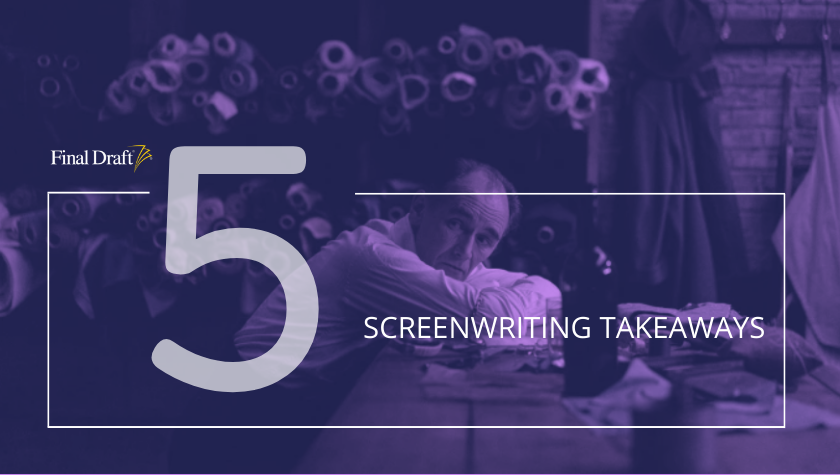Discussing inspiration with 'The Outfit' writer-director Graham Moore
March 24, 2022
Photo courtesy of Nick Wall/Focus Features.
Graham Moore, Academy® Award-winning screenwriter of The Imitation Game, has made his feature directorial debut with the crime drama The Outfit. The film, which Graham also co-wrote with Jonathan McClain, features an all-star cast including Academy Award-winner Mark Rylance, Dylan O’Brien, Zoey Deutch, and Johnny Flynn. The Outfit follows Leonard (Rylance), an English tailor who used to craft suits on London's world-famous Savile Row. But after a personal tragedy, he's ended up in Chicago, operating a small tailor shop in a rough part of town where he makes beautiful clothes for the only people around who can afford them: A family of vicious gangsters.
“I think, for me emotionally, the film really began with my grandfather," says Moore about the film's genesis. "When I was about seven my parents split up and my grandfather became this huge paternal figure in my life and my brother’s life. My first experiences of going to the movies were with my grandfather. He was the first person who taught me how to tie a tie. I think he was the gentlest, kindest mensch I have ever known in my life. He was a doctor in a small town. He had this corner family medical practice and one of his patients was the notorious mobster, Jerry Catena, and growing up this was always the subject of familial horror. I distinctly remember my grandmom would always run to him and say, ‘How can you treat this man? You know he’s a murderer?’ I remember this so vividly. My grandfather would always say, ‘He’s never been anything but a gentleman to me.’ So that always stayed with me; I had a fascination with what must have been going on behind closed doors. What were the conversations like between a man who was as kind and gentle and upstanding as my grandfather and a man we know pretty authoritatively to be a vicious murderer of many, many people?"
“I’ll confess it wasn’t the first thing that popped in my mind a few years ago when my dear friend and co-writer on this film, Jonathan McClain, were having a dinner and Jonathan said to me, ‘How come nobody’s ever made a film about a Savile Row tailor before?’ And I said, ‘That’s an interesting question: How come nobody’s ever made a film about a Savile Row tailor?’ It seemed like such a fascinating world to get into," continues Moore. "I think Jonathan has forgotten far more about the fine art of men's clothes-making than Lord knows I will ever learn. So he was a great introduction into that world and we are both just obsessed with the psychology of these people, who spend decades and decades of their lives training to perfect this really esoteric craft."
So Moore and McClain had their protagonist, but finding the story took a little longer.
“We had this idea about a tailor, but we couldn’t find a story we wanted to tell around our tailor. And then one day we found this fact in a book of 20th Century clothes history that just leapt out at us. The first bug — in the history of the FBI — they planted to get at the mob; they planted it in Chicago in 1956 inside a tailor’s shop. Once we read that, we both went, ‘Oh, well, that’s the movie!’ What if we tell the story of a man like my grandfather — a seemingly decent, upstanding man — who is trying to maintain his decency while working in the service of these vicious killers.”
There is a classicism to The Outfit and it feels like, in a lot of ways, like a film from the thirties or forties, because so many of those films themselves were shot on soundstages or based on plays. Because of COVID and the emergence of small-budgeted Indie films, we’ve been led to a place where we’re going full circle; it feels like screenwriters are writing plays again and filmmakers are shooting them. This will be appealing to some people because suddenly films have become dialogue-driven and character-driven again. Unless a writer is working on a bigger superhero movie or a franchise, or an established IP, it feels like the best game in town right now is writing a smaller, character-driven, dialogue-driven film.
“My experience in the past five or eight years — kind of from when I made The Imitation Game to here — is that there are these budget slots for films: there are one million dollars and under; there are three million dollars; there’s five (which is what The Outfit was); then there’s like a ten to fifteen zone, and then there’s one hundred and above. And those are the budgetary ranges of things that make financial sense. It’s interesting that in some ways, one of the things you can do in those zones is create these space-constrained stories," says Moore.
“It’s funny because Johnathan and I wrote the script a couple of years before COVID. If you told us back when we started talking about it in 2018 that this would be an ideal thing to shoot in the middle of a global pandemic, we would’ve said, ‘Global pandemic?? What are you talking about? That sounds like a sci-fi nightmare.’ We were actually planning on shooting it before the pandemic, and strangely our first production plan got shuttered by the outbreak of COVID. We had to postpone for a long time. So yeah, I think you’re right that we’re at this interesting point. For this film, the idea of setting it all in one big set came very quickly, and it felt very organic to the story, because it’s a story about a guy who has locked himself away in his shop as he tries to make these beautiful things and pretend the outside world doesn’t exist. He’s sort of a hermit, right? The whole thing takes place over the course of the forty-eight hours our main character never leaves his shop. In some ways it’s like a single protagonist film where we see what he sees, we hear what he hears, we go where he goes; he’s in every single scene, and the camera doesn’t happen to leave the shop because he doesn’t happen to leave the shop. This seeming physical restraint actually gives us a greater emotional attachment to the main character because we’re not cutting away to side characters, we’re not cutting away to side plots. There’s no B plot to The Outfit. There’s no C plot. There are events that happen offscreen that we don’t see and we just stay with Mark Rylance’s character as he responds to the aftermath of those events as they come into his shop. That tight emotional focus felt really compelling to us."
“And similarly I think you’re exactly right that there is this great tradition for a hundred years now of films with limited physical space, limited numbers of characters; films that can be kind of play-like. I love them...that’s so much of what we were trying to do. Contained thrillers are this classic cinematic form that we’ve been doing since the twenties and thirties.”
The Outfit definitely recalls classic, contained thrillers and single-location dramas such as The Petrified Forest and even Arsenic and Old Lace in spots.
“Yeah! I feel there are some jokes in here that are kind of inspired by Arsenic and Old Lace jokes; obviously, through the great Hitchcock single location thrillers like Rope and Lifeboat, I really love, up through something like Deathtrap in the eighties or Sleuth, which I really adore. It felt like there’s a great tradition of using the single space not as a constraint, but as an advantage.”
Not only do characters get greater focus with this approach, but there’s also more tension; because moving to those B plots and C plots can oftentimes act as a tension release, and in a single location thriller, the audience is staying with that person in that situation, so there’s no release.
“Yeah, I’m glad to hear you say that. I write novels too — I spend half my time in films, the other half writing books — [they] have each been that way. They have these very definitive, singular protagonists; the entire book is told through that protagonist’s perspective, so similarly there are big events that happen off-screen or off the page, so to speak, that the reader reads about when our protagonist finds out that they occurred. It’s quite a normal literary conceit and it feels like something interesting to explore in a film as well exactly for the reason you’re saying.”
Early on in The Outfit, it’s firmly established that it’s a contained film, that you’re staying with these characters. Oftentimes people’s minds will adapt to a film and to the world and to the rhythm of a movie; what it’s going to do and what it’s not going to do. That deliberate choice started on the page for Moore and McClain.
“[The script] was pretty well worked out. Jonathan and I wrote it to direct, so that was always the plan. At the same time, I always feel like a screenplay goes through two essential phases. There’s the initial phase of writing where you’re writing the version of the script that’s going to be sent around to all the actors, to the financiers; it’s going to be sent to all the department heads to gather their support and their participation or not. It’s the thing everyone is going to read and decide if they want to be part of it or not. And those early drafts of our script that we’re sending to people include quite novelistic descriptions of unfilmable things and events. It’s much more a reading experience than something you can actually throw in front of a camera and shoot," explains Moore.
“Then there’s this second phase of the screenwriting process where everyone’s on board, you’re going to make the movie, now you have to actually chop this thing up into shootable moments. So then as the director, I can go in with Jonathan and with Dick [Pope] our cinematographer, and even with our cast, and we can start rehearsing the scenes.”
For Moore, the first job of a screenplay is to make people envision a movie; to sell that movie by getting people emotionally invested. But the screenwriting process isn't a one-size-fits-all approach.
“I’ve never met two writers with the same process or the same style, and that’s partially the fun of it. Screenplays are such funny things, and look: I’m somebody who does a thousand drafts of every screenplay. That’s just sort of the way I like to work. It’s very experimental. We’re always trying stuff. If you’re making a film and somebody has an idea — if it’s an actor or a producer or whomever — for a moment or a scene, the simplest, most artistically efficient way of testing out whether or not that might be a good idea is to try writing it. I mean, in a couple of hours, Jonathan and I can put together a plausible version of what that moment might look like, and then we can look at the page and say, ‘Is this worth exploring? Is this not worth exploring?’ I always want that to be something that we’re constantly playing with. And to your question about making screenplays readable documents: A sales tool is one way to put it; I think another way of putting it might be to say a screenplay can be a statement of intention; it can be a way of saying, ‘This is the kind of thing I want to make. This is the best description that I can muster in a hundred, a hundred ten, a hundred twenty pages, of the film that I want to make. This is the best way of describing what that film is, and I’m going to use the elements of the screenplay format that are useful to me in doing that.’”
The Outfit is released by Focus Features and is currently available to watch in theaters and PVOD.
Written by: Edwin Cannistraci
Edwin Cannistraci is a professional screenwriter. His comedy specs PIERRE PIERRE and O’GUNN both sold with more than one A-list actor and director attached. In addition, he’s successfully pitched feature scripts, TV pilots and has landed various assignment jobs for Universal, Warner Bros, Paramount and Disney.



